Convert Asian sizes to US sizes, UK and EU sizes – Asian size conversion chart
If you’ve done any searching online at all about clothing, you’ll have found plenty of pages of clothing and fashion ‘from China’, ‘from Korea’ and ‘from Japan’. There are plenty of other suppliers in other countries that have clothes available for buyers worldwide too. But customer satisfaction for some of these products are low, and in many cases, the leading cause of this can be as simple as that the customer has not understood the sizing before placing their order. So if you’re considering DropShipping clothing from East Asian countries (especially China) then you’ll need to be sure that you’re providing your customers with enough information about the products.
Why DropShip clothing?

We’ve talked extensively on the blog about DropShipping before – because of the way the model can help revolutionise retail, and of course we love the way it works when it is done well! There’s the fact that it is easy to start, there’s very little risk, and done well, very low costs involved. It’s also incredibly flexible, and offers sellers so much opportunity to diversify their business – from testing products before investing in stock, adding seasonal items to a range and accessing new customers by selling on different sales channels. Whether a seller has a traditional retail outlet, or the seller is just starting their first eCommerce business, with the right solutions, DropShipping can be incredibly easy to manage, and has the potential to be incredibly lucrative right from the get-go.
It is widely known that women’s clothing is one of the bestselling categories online – that’s probably not much of a surprise really when we consider the convenience it offers! Women are also often involved in purchasing clothing for the men in their lives, whether they are romantic partners, a father, brothers, uncles or sons – and of course, women are also frequently responsible for buying clothing for children. What we’re saying as we’re pointing these things out is, that sellers shouldn’t restrict themselves to selling just women’s fashion – there is plenty of scope for your business to diversify, which in turn will help to increase profits!
Clothing isn’t just a great category for sellers to enter because it is a bestselling category though. Here are some other great reasons to consider DropShipping clothing:
Fashions change each and every season
The fashion industry used to take months for new trends to reach customers. Fashion week would be held, reporters for glossy magazines would take notes and photos, and write reports for the next issue. At the same time, high street stores would be creating designs that were inspired by the catwalks, and producing the items at a much more accessible price than the couture and high fashion houses were offering. Fashion week shows in February would start to be reflected in stores by the end of summer.
Today, the whole process is sped up. Luxury brands live stream the catwalk show of their new collections and the whole world sees their designs at the same time. In the rare cases where live streams are not used, reports are uploaded to fashion websites within the hour, which means demand for designs that replicate the looks is instant – customers want cutting edge looks immediately.
That’s where the beauty of DropShipping fashion clothing comes in. Because so much manufacturing is done in China, the moment the show is over, Chinese designers create designs that replicate the look immediately, and production is able to begin quickly – in many cases, on the exact same day the show was held. That means sellers all over the world can react to catwalk trends almost instantly, and add those designs to their stores as soon as the products are available from China. The seller keeps up with the trends, maintains customer interest and is likely to make more sales.
Certain clothing categories are more in demand at different times of the year
As we’re writing this post, it’s chilly outside and there’s a storm forecast over the next few days. We’re considering whether it’s worth buying a new coat when winter is almost done (we hope!) and wondering whether our feet will ever feel warm again! Of course, as the seasons change, different items are more in demand than others. While we’ve been mostly looking at winter coats, boots, hats and gloves recently, in a few weeks we expect we will be starting to think about our spring and summer apparel – t-shirts, shorts and sandals.
DropShipping allows sellers to be dynamic with what they’re selling – to react to customer demand, to add extra lines quickly and easily. There is no risk of dead stock, or end-of-season sales required – that is all dealt with by the supplier. If something isn’t selling, you can simply stop listing it – no stress, and no fuss.
Different colours are traditionally associated with different seasons
We recently wrote a post about the psychology of colour that is an interesting read, but you’re probably already aware of how the seasons influence the colours we choose. Autumn and winter are associated with darker, muted tones and stronger, jewel-like hues, while throughout the spring and summer, pastels and brighter colours are favoured. That means that sellers who are DropShipping can update their products with items in the appropriate hues – as well as what is currently trending, of course.
Customer demand changes from season to season
While some clothing items will sell consistently year-round – jeans, for example – customer demand will go up and down in line with what is happening worldwide, as what events are coming up on the calendar. Items like pyjamas and dressing gowns may sell all year, but will sell especially well just before Christmas, when they are often given as gifts. DropShipping allows sellers to add extra lines to their stores during the times when items those categories are in peak demand, and to stop selling them as customer interest wanes.
Why aren’t clothing sizes universal?
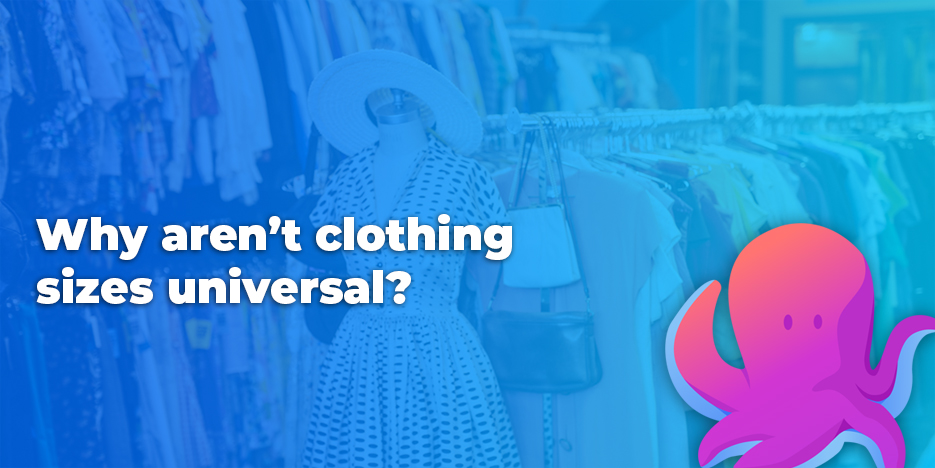
We understand your frustration, but it’s as simple as this: humans come in so many different shapes and sizes that it would be impossible to create a universal standard that could apply to everyone of the same gender. Within the same regions, there are differences, and even within the same country, clothing sizes are not standardised. In some cases, customers find that they can’t even wear the same size in different styles from the same brand!
It has been suggested that the phenomenon of different sizing between stores and within brands is mostly a women’s issue – since many items of clothing for men are sold by measurements in centimetres or inches. However, this is likely to be an issue for children’s sizing – there are some children that are much bigger than others, and that need to size up considerably. That means as a DropShipper, you’ve still got to be careful to list clothing measurements carefully.
Fashions, and different styles of clothing have existed in countries for decades and the technology to mass-produce ready-to-wear garments has been around since the 1800s – which means that different clothing size conventions have been around in different countries for almost as long. Taking into account different styles of national dress, and for more conservative countries, the requirement to cover certain areas of the body, means that it’s just not possible to create a ‘universal’ sizing system.
Women’s clothing sizes
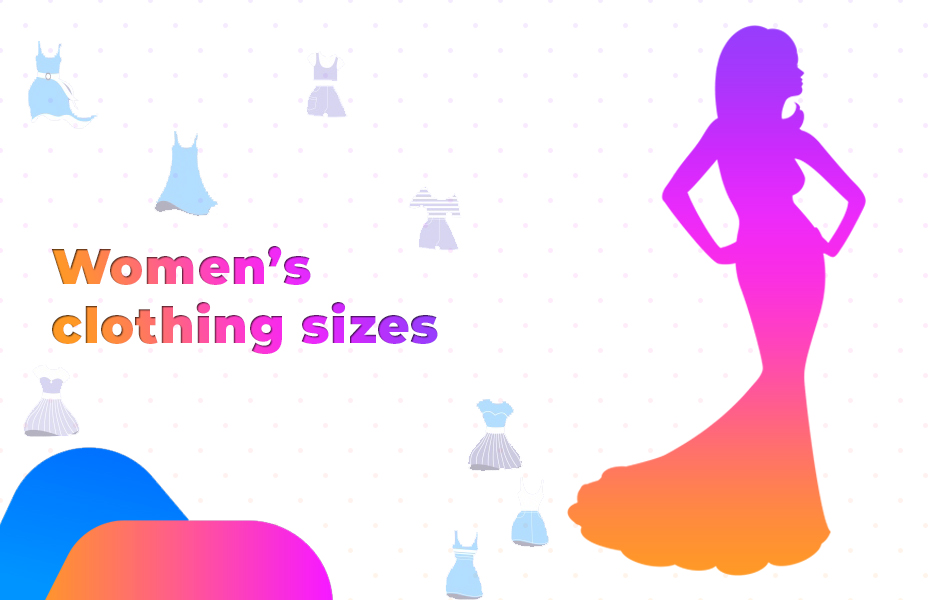
How to find measurements for women’s clothing
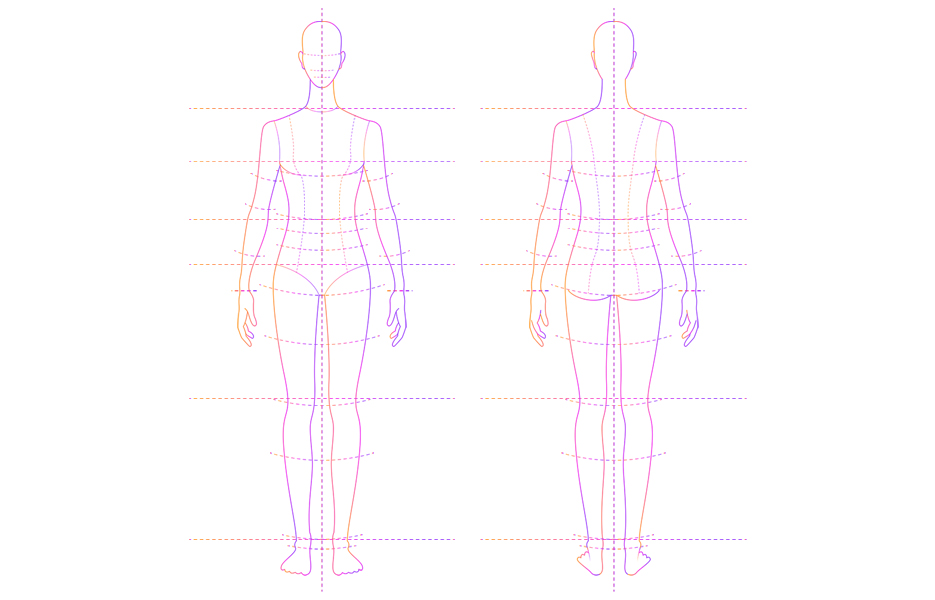
Before ordering items of clothing, it’s best for customers to know their exact sizing, and check their size against the measurement of the garments. That’s even more important if you’re ordering from an overseas supplier! When it comes to women’s clothing, there are four main measurements that you can include that can help customers be as sure as they can that their garment will fit.
1. Bust measurement
The bust measurement is found by measuring under the arms, around the shoulder blades and across the fullest part of the bust. The tape measure should not be pulled too tight. (Note that measuring for a bra fitting also requires the measurement under the breasts)
2. Waist measurement
The waist measurement is found around the narrowest part of the waist, around an inch or so above the belly button.
3. Hip measurement
The hip is measured around the fullest part, including around the buttocks.
4. Leg length measurement
The leg length, or the ‘inseam’ is the measurement from the inside of the top of the leg to the ankle. This measurement is best taken with the help of another person, for accuracy, or if another person isn’t available, taking the same measurement from a pair of trousers that fit to the right length.
Additional measurements that can be useful and may be supplied by overseas sellers include around the thigh measurement (for trousers, shorts and jeans), upper arm measurement (for shirts, jumpers, jackets, dresses and t-shirts – especially useful for where the material will not stretch) and sleeve length measurement (again, for shirts, jumpers, jackets, dresses and t-shirts). Not all sellers will provide this, so be aware if you’re ordering from a country where customers generally have smaller figures, then suggest to your customers that they should size up.
Women’s international clothing size conversion
This is a relatively complete conversion table for women’s clothing. However, although it’s a good indication of where to start, we will always recommend checking the measurements for each garment if you can and providing specific information for your customers. That’s because – again – with the differences in shapes and sizes between women in different countries, fit may be very different.
| Women’s clothing size conversions | ||||||||||||
|---|---|---|---|---|---|---|---|---|---|---|---|---|
| UK | 4 | 6 | 8 | 10 | 12 | 14 | 16 | 18 | 20 | 22 | 24 | 26 |
| Europe | 32 | 34 | 36 | 38 | 40 | 42 | 44 | 46 | 48 | 50 | 52 | 54 |
| US | 1 | 2 | 4 | 6 | 8 | 10 | 12 | 14 | 16 | 18 | 20 | 22 |
| Australia | 4 | 6 | 8 | 10 | 12 | 14 | 16 | 18 | 20 | 22 | 24 | 26 |
| China | S | M | L | XL | XXL | XXL | XXXXL | 5XL | 6XL | 7XL | 8XL | 9XL |
| Japan | 3 | 5 | 7 | 9 | 11 | 13 | 15 | 17 | 19 | 21 | 23 | 25 |
Women’s shoe size chart
You might think that shoe sizes might be a little more standard worldwide. There was a universal footwear sizing system developed in the 1970s called Mondopoint, which measures the feet in millimetres, but unfortunately, only a few retailers use it, especially for fashion styles. In fact, the only reference to it that we could find was where retailers were selling ski boots!
Unfortunately, that means sellers and their customers that are buying from overseas need to do their research carefully before purchasing, because there are completely different sizing in different areas of the world. While women’s shoes in the UK run between size 3 to 8 (sometimes larger), the US sizing starts at size 5 and runs to 10½, European sizing starts at 35½ and runs to 42, and Japanese sizes run from 21 to 31! (Note though that these are general, widely available shoe sizes. There are specialist sellers who may provide bigger sizes in styles for women – and there are more people with bigger feet than ever looking for women’s styles, so it might be worth investigating whether this could be a niche for your business!)
| Women’s shoe size conversions | ||||
|---|---|---|---|---|
| UK | Europe | US | China | Japan |
| 3 | 35.5 | 5 | 36 | 21.5 |
| 3.5 | 36 | 5.5 | 37 | 22 |
| 4 | 37 | 6 | 37.5 | 22.5 |
| 4.5 | 37.5 | 6.5 | 38 | 23 |
| 5 | 38 | 7 | 39 | 23.5 |
| 5.5 | 39 | 7.5 | 39.5 | 24 |
| 6 | 39.5 | 8 | 40 | 24.5 |
| 6.5 | 40 | 8.5 | 41 | 25 |
| 7 | 41 | 9 | 41.5 | 25.5 |
| 7.5 | 41.5 | 9.5 | 42 | 26 |
| 8 | 42 | 10 | 43 | – |
Men’s clothing sizes
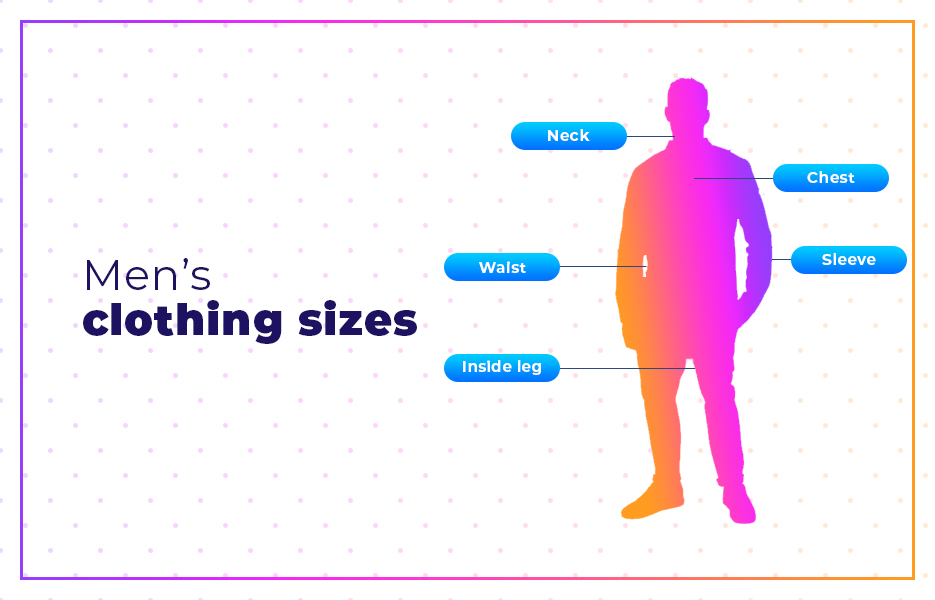
Men’s clothing tends to be a little simpler, since in many cases it is as simple as getting measurements, either in centimetres or in inches.
How to find measurements for men’s clothing
1. Neck measurement
The neck measurement should start at the base of the neck, where it joins the shoulders, then wrap around the neck. For a looser fitting collar, put your finger between the tape and your neck before reading the measurement.
2. Sleeve length measurement
This one really does require help from someone else to get an accurate measurement! Bending the elbow, the tape measure is taken from the middle of the back of the neck, around the shoulder and elbow down to the wrist bone.
3. Chest measurement
This measurement is taken from underneath the armpits, across the fullest part of the chest and across the shoulder blades. The tape measure should be horizontal, and not pulled too tightly.
4. Waist measurement
The waist measurement is taken around the naturally narrow part of the waistline – close to the belly button. One finger should be placed between the tape measure and the body before the measurement is taken.
5. Inside leg measurement (the inseam)
To take the inside leg measurement, place the tape measure on the inside of the top of the leg (right next to the groin area) and then measure to the lower part of the ankle. If you already have a pair of trousers that fit perfectly, the measurement can be more easily found by taking the measurement from there.
Just like women’s clothing, there are other measurements that may be useful to know when purchasing from overseas. Take into account that Chinese men are generally slimmer than western men – so trousers will be cut slimmer around the thigh, arms on t-shirts may be smaller and so on. If you can find a supplier that gives you such information, this can help your customers.
Men’s international clothing size conversion
Men’s clothing is a little easier to understand where measurements are given in inches or centimetres. However, where small, medium and large sizing is used, it’s a good idea to find those sizes from the supplier.
| Men’s sizing – shirts, t-shirts, knitwear and jackets | |||
|---|---|---|---|
| UK/European/US sizing | Inches (chest measurement) | Centimetres (chest measurement) | Chinese size |
| XXS | To Fit 32-34 | 81-86 | – |
| XS | To Fit 34-36 | 86-91 | Small |
| S | To Fit 36-38 | 91-96 | Medium |
| M | To Fit 38-40 | 96-101 | Large |
| L | To Fit 40-42 | 101-106 | Extra large |
| XL | To Fit 42-44 | 106-111 | XX Large |
| XXL | To Fit 44-46 | 111-116 | XXX Large |
The size of men’s trousers is pretty simple, since sizing tends to be determined by waist measurements, and then by leg length. This can be a little tricky when purchasing from overseas, as the UK and the US use inches to measure trouser garments, but the rest of Europe and Asia measure in centimetres. It can be an easy win for sellers to add a conversion chart to your listings – you can easily create a simple conversion table in Word and save it as a graphic.
| Men’s trouser sizes (waist) | ||
|---|---|---|
| Size | Waist in inches | Waist in centimetres |
| XS | 28-30 | 71-76 |
| S | 30-32 | 76-81 |
| M | 32-34 | 81-86 |
| L | 34-36 | 86-91 |
| XL | 36-38 | 91-96 |
| XXL | 40-44 | 101-111 |
| 3XL | 46-50 | 117-127 |
| 4XL | 52-54 | 132-137 |
| 5XL | 56-60 | 142-152 |
| 6XL | 62-64 | 157-162 |
| Men’s trouser length | ||
|---|---|---|
| Length | Length in inches | Length in centimetres |
| Extra short | 27 inches | 69 cm |
| Short | 29 inches | 74 cm |
| Regular | 31 inches | 79 cm |
| Long | 33 inches | 84 cm |
| Extra long | 35 inches | 89 cm |
Men’s shoe size chart
| Men’s shoe size conversions | |||
|---|---|---|---|
| UK | Europe | US | China |
| 3 | 35 | 3.5 | 35 |
| 3½ | 35.5 | 4 | 36 |
| 4 | 36 | 4.5 | 37 |
| 4½ | 37 | 5 | 38 |
| 5 | 37.5 | 5.5 | 39 |
| 5½ | 38 | 6 | 39.5 |
| 6 | 38.5 | 6.5 | 40 |
| 6½ | 39 | 7 | 41 |
| 7 | 40 | 7.5 | – |
| 7½ | 41 | 8 | 42 |
| 8 | 42 | 8.5 | 43 |
| 8½ | 43 | 9 | 43.5 |
| 9 | 43.5 | 9.5 | 44 |
| 9½ | 44 | 10 | 44.5 |
| 10 | 44.5 | 10.5 | 45 |
| 10½ | 45 | 11 | 46 |
| 11 | 45.5 | 11.5 | – |
| 11½ | 46 | 12 | 47 |
| 12 | 46.5 | 12.5 | 47.5 |
| 12½ | 47 | 13 | 48 |
| 13 | 47.5 | 13.5 | – |
Children’s clothing sizes
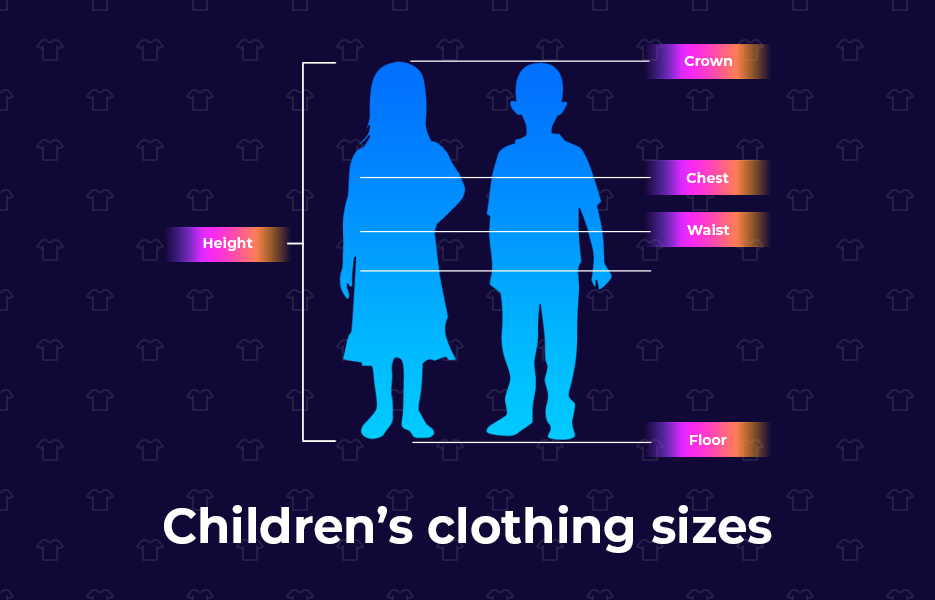
Children’s international clothing size conversion
As with all other clothing, there are major differences between children’s clothing sizes worldwide. It is always advisable to add exact measurements of items that you’re selling in centimetres where you can, so your customers can check if the size is going to be appropriate before they order.
| UK | Europe | US |
|---|---|---|
| 12 months | 80 cm | 12 -18 months |
| 18 months | 80 – 86 cm | 18 – 24 months |
| 24 months | 86 – 92 cm | 24 months |
| 2-3 | 92 – 98 cm | 2T |
| 3-4 | 98 – 104 cm | 4T |
| 4-5 | 104 – 110 cm | 5 |
| 5-6 | 110 – 116 cm | 6 |
| 6-7 | 116 – 122 cm | 6 – 7 |
| 7-8 | 122 – 134 cm | 7 – 8 |
| 8-9 | 134 – 140 cm | 9 – 10 |
| 9-10 | 134 – 140 cm | 10 |
| 10-11 | 140 – 146 cm | 11 |
| 11-12 | 164 – 152 cm | 12 |
Chinese sizes don’t convert exactly – so here’s guidance of Chinese children’s clothes sizing.
| Chinese children’s clothing sizes | ||||
|---|---|---|---|---|
| Clothing Label Size | Age | Height | Chest | Waist |
| 2 | 1-2 yrs | 80cm | 50cm | 49cm |
| 4 | 2-3 yrs | 90cm | 52cm | 50cm |
| 6 | 3-4 yrs | 100cm | 54cm | 51cm |
| 8 | 4-5 yrs | 110cm | 57cm | 52cm |
| 10 | 6-7 yrs | 120cm | 60cm | 54cm |
| 12 | 8-9 yrs | 125cm | 62cm | 55cm |
| 14 | 9-10 yrs | 130cm | 64cm | 57cm |
| 16 | 10-11 yrs | 140cm | 68cm | 61cm |
| 18 | 11-12 | 150cm | 72cm | 64cm |
| 20 | 12-13 | 160cm | 76cm | 68cm |
Children’s shoe size chart
Note that in some of the smaller sizes, it is a good idea to check size in centimetres before purchase, as sizes will differ between manufacturers.
| Children’s shoe size conversions | |||
|---|---|---|---|
| UK | Europe | US | China |
| 0 JNR | 15 | – | 8 |
| ½ JNR | 16 | – | 9 |
| 1 JNR | 16 | 2 | 9½ |
| 1½ JNR | 17 | 2 | 10 |
| 2 JNR | 17.5 | 2.5 | 10½ |
| 2½ JNR | 18 | 3 | 11 |
| 3 JNR | 19 | 4 | 11½ |
| 3½ JNR | 19.5 | 4.5 | 12 |
| 4 JNR | 20 | 5 | 12½ |
| 4½ JNR | 21 | 5.5 | 13 |
| 5 JNR | 21.5 | 6 | 13 |
| 5½ JNR | 22 | 6.5 | 13½ |
| 6 JNR | 23 | 7 | 14 |
| 6½ JNR | 23.5 | 7.5 | 14½ |
| 7 JNR | 24 | 8 | 15 |
| 7½ JNR | 24.5 | 8.5 | 15½ |
| 8 JNR | 25 | 9 | 16 |
| 8½ JNR | 26 | 9.5 | 16 |
| 9 JNR | 26.5 | 10 | 16½ |
| 9½ JNR | 27 | 10.5 | 17 |
| 10 JNR | 28 | 11 | 17½ |
| 10½ JNR | 28.5 | 11.5 | 18 |
| 11 JNR | 29 | 12 | 18 |
| 11½ JNR | 30 | 12.5 | 18½ |
| 12 JNR | 30.5 | 13 | 19 |
| 12½ JNR | 31 | 13 | 19½ |
| 13 JNR | 31.5 | 1 | |
| 13½ JNR | 32 | 1.5 | |
| 1 | 33 | 2 | |
| 1½ | 33.5 | 2.5 | |
| 2 | 34 | 3 | |
| 2½ | 35 | 3.5 | |
| 3 | 35.5 | 4 | |
Where should you get size conversions from?
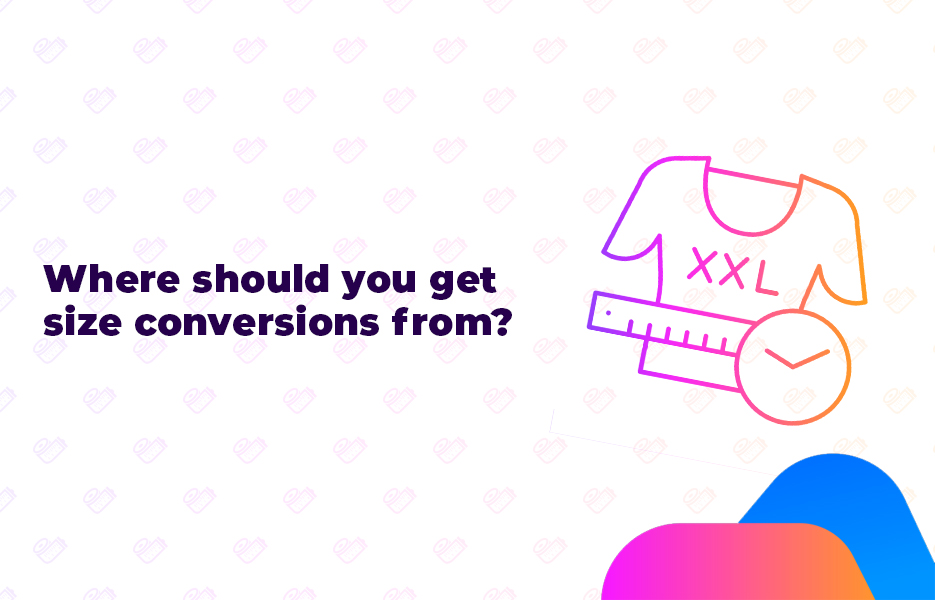
We keep telling you that it’s a good idea to get sizing information about the products you’re selling, and there are a number of ways that you can access sizing information in order to provide a better service for your customers.
Check if the supplier already has this information available
Suppliers and sellers in China don’t want to have to deal with returns any more than you do. They’re aware of the size differences between countries, and so many suppliers will have size conversion charts available – either on their website, or you might find it included in the product information for each item they sell. It only takes a few moments to check, and will speed up your process significantly if you can find it without needing to wait for an answer from your supplier.
Ask for a size conversion chart from your suppliers
If your supplier hasn’t got a size conversion chart on their website or on each of their listings, it might have been an oversight – it could be that they had simply forgotten to add it. If you’re going to be selling their items, then you need accurate sizing information – so get in touch with them, tell them that you’re planning to DropShip their items. Ask them for a size conversion chart, and mention that you weren’t able to find it on their website but it would be useful if it was there. You’re helping them out, and this small amount of goodwill might be just enough to set the tone for your working relationship with them – which could be useful if, or when you need to return an item.
Create your own sizing chart
Whether you’re listing products on your own website or on marketplaces, creating your own sizing chart will help build trust in your brand. You can ensure the information is clear, that the use of English is accurate, and you can style it with your own branding colours, which can help repeat customers recognise that your business, even if you’re not allowed to use your name or logo on marketplace listings. Save your charts as image files, and you’ll be able to include them on each of your listings.
Convert the size of each product
If you have the information available, and you have the time, it’s worth checking the conversion of each of your listings. Like we said, there will be differences in sizing between suppliers, and customers want to know quickly whether the product is going to fit them. If they have to work to find out the answer, chances are they’re going to get bored quickly and go elsewhere. It might take a few minutes for each item to do, but we definitely think it is worth the extra effort.
Why should you bother sharing sizing information?

If you’ve ever ordered an item from Wish, AliExpress or a ‘from China’ seller on Amazon or eBay, you’ll probably already know the answer to this question! It’s incredibly easy to order completely the wrong size when you’re ordering from overseas (we speak from experience…!) so giving customers the information they need can help ensure they’re getting the best possible experience when buying from you.
To help you manage customer expectations
You want happy customers – of course you do. Happy customers are the ones that get what they expected, and are pleased with their purchase. They are more likely to leave great reviews, like you on your social media channels and are likely to buy from you again.
By providing your customers with the correct sizing information, they can assess the suitability of the garment for their needs and save their time. If they’re tall, they need to know the trousers they are ordering are going to cover their ankles!
To save yourself the hassle of needing to deal with returns
Many customers have become used to being able to send items back when they don’t suit their needs. That’s great if you’re the customer, but as the seller that’s a headache you’re going to want to try and avoid. If you’re DropShipping from China, the cost of returning items to the supplier might be prohibitively expensive – meaning that you either end up out of pocket. Either you’re going to need to meet those shipping costs, or you’ll have to provide a refund. On top of that, if your customer sends the item back to you when you’ve arranged a replacement, you’ll have to keep that item and try to resell it – which is a hassle that you just don’t need.
What if suppliers don’t provide conversions?
Sometimes, there won’t be an exact conversion. In those cases, try to track down accurate measurements for the item so that you can update your listing information, and so that your customers are able to make an informed decision about whether the item is right for them. If you can’t get sizing information about an item, consider whether the supplier is the best one for you to work with (if they’re not providing the information you need, what else might they neglect to do?) and whether that particular item is right for your store. Perhaps an alternative item that you CAN get sizing information for would be a better option and present less difficulties.
How & where should you display sizing information?
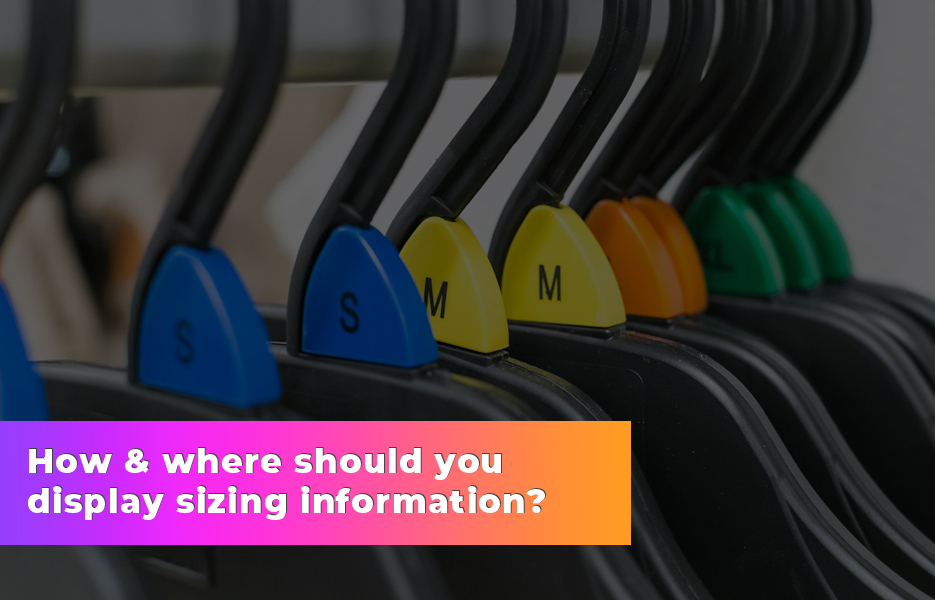
We recommend that sellers should display accurate sizing on each listing. If exact measurements are available, it is wise to include them as part of the listing, as well as the approximate size conversion for the country that you’re selling in. If there is additional information – such as where suppliers have detailed the length of a t-shirt, or there are different leg lengths available, this should be specified.
If you’re certain that your sizing will be the same for all the items on your website, you could just add a link to the sizing chart on your website on each of your listings. However, we’d advise that you create a sizing chart, save it as an image and then add it to the images on your listing. It’s more convenient for customers, because they don’t need to leave the page to decide if the item is right for them, and it means they’re more likely to add to basket and complete their purchase.
What else to consider when DropShipping clothing from Asia
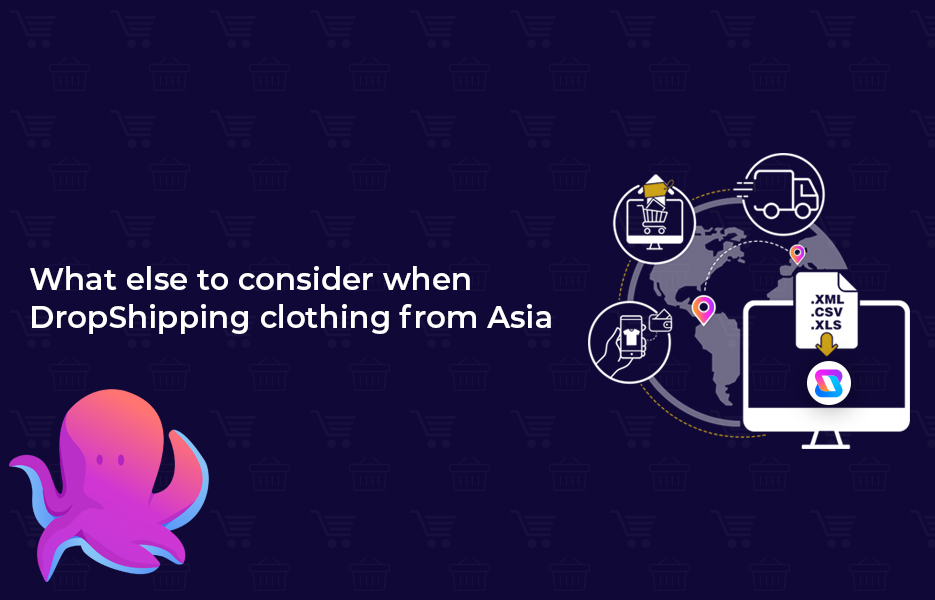
Sizing isn’t the only challenge you might encounter when you’re DropShipping clothing from Asia. Some of these issues will apply to DropShipping anything from overseas – but they’re all definitely worth considering before you get started.
Quality
Although there are Asian suppliers that will be providing garments that are great quality, there are just as many – if not more – that provide items that are below the standard that might be expected of customers in the west. To avoid having to provide refunds for customers that are dissatisfied with their items, it’s worth ordering samples from your supplier. It might mean a short delay before you start to sell, and it might cost you a little, but if you can, in the long run it is worth it to avoid refunds and negative reviews.
Styles
Although undoubtedly the items that Chinese manufacturers are producing are going to be influenced by the major fashion houses and worldwide trends, details and finishes may be very different from what customers in the west expect. Not only might the finish be different to expected, the fit might be considerably different to western sizes. Sleeves and waist measurements are often narrower than in UK and US sizing, making for an odd fit.
‘Free size’ or ‘one size’ items
It’s pretty obvious when you think about it – if your supplier is based in China, their ‘one size’ and ‘free size’ items are going to be designed for the domestic and geographically local market first. Since Asian people are naturally more petite than many of us in the west, unless garment measurements are available, avoid items that are marked as free size, or one size fits all. They’re simply not going to fit most of the population of the UK, the US and most of Europe. If you take a chance, you’re likely to encounter complaints, returns and negative reviews – all of which can impact on your long-term success.
Communication can be difficult
If you do encounter problems with an item that needs to be returned, you need to know whether you’re going to be able to come to a satisfactory conclusion with the supplier. Considering you’re already up against time zones that can cause delays, the language barrier can sometimes be a bigger problem than you expect. Relying on Google to translate can lead to all kinds of interesting(!) misunderstandings.
Delivery times
If you’re DropShipping from China, then delivery times can be weeks, and can easily be longer than that if the order is not suitable for ePacket delivery. If you’re DropShipping from Asian suppliers, you’ll need to manage your customer expectations accordingly. Your customers may go elsewhere if UK sellers are offering the same item for a similar price.
Margins
Many of the items that you’ll be considering DropShipping from China and Asia will already be listed on marketplaces for incredibly low prices. Not only that, you’ll probably be up against other DropShippers too. That means you’ll need to remain competitive – and as such, your profit margins may end up being incredibly small. We’re talking about fractions of pennies, in some cases. Selling higher value items may be more profitable, but bear in mind that many customers will have a certain price point that they are prepared to buy from overseas to. Over that price – whatever they have decided – it simply won’t be worth it for many people, especially as they won’t know the quality of the item, and they’ll simply look to UK retailers.
Branded items
A word of warning about DropShipping branded items. Even if your supplier has guaranteed that they are an authorised reseller of certain brand name items, you need to be careful when you’re DropShipping – you are the seller, and you’re almost certainly not authorised by the brand to sell those items. In addition, if the ‘branded’ item that you’re selling is found to be a fake, then at best you’ll end up needing to provide refunds when customers complain. Beyond that, you might encounter negative reviews and feedback being left on your marketplace listings, or have customers report your business to marketplaces, which could lead to your account being suspended. You don’t need to look hard to find out how hard it is to get your Amazon account reactivated! At the worst end of the scale, you might end up involved in a legal situation where the brand owner has taken you, or the supplier to court. Although the worst might never happen to you, the headaches that any one of these issues could cause means that it’s simply not worth the hassle. There are plenty of other clothing items you could sell that won’t get you in trouble – so we recommend sticking with those rather than dealing in grey market goods.
Should you avoid using Asian suppliers?
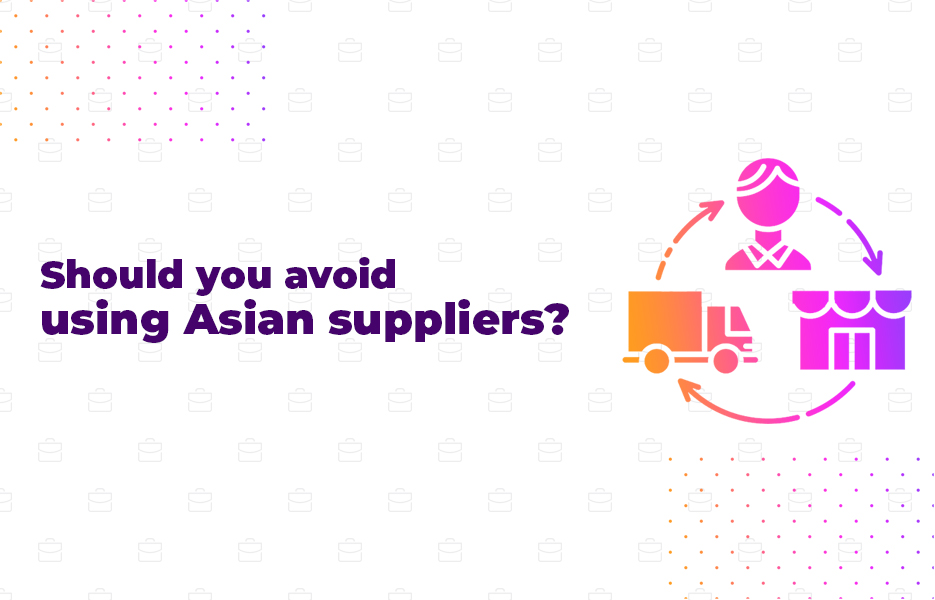
No, that’s absolutely not what we’re saying. If you have the right strategy, and you’ve covered the challenges and considerations that we suggested above, DropShipping clothing from Asian suppliers can be a valuable addition to your strategy. We’re simply making you aware of some of the challenges you might find yourself up against.
If you decide that selling clothing from Asian suppliers isn’t the right move for your business, that’s fine – there are plenty of other ways that you can DropShip clothing and save yourself the hassle of storage, dead stock and so on.
DropShipping from UK suppliers
By using UK suppliers, you’re less likely to encounter the issues with sizing that you might encounter from overseas suppliers. If there are issues that mean you need to arrange a return for your customer, communications are easier and delivery times are significantly quicker, which means your customer gets a replacement item much faster. You can develop a stronger working relationship with your suppliers, which can lead to greater success for both of you. In some cases, you might find that your supplier is happy to provide you with a few days’ worth of credit, meaning that you can free up your cash to develop your business even further, or your supplier might start to work with you by promoting your business on their social media.
Even if you’re DropShipping products from UK suppliers, it’s still a good idea to include accurate product measurements on your listings wherever it is possible. Sizing is different in different high street stores, and even within the same brand, so by providing correct, in-depth measurement information, you’re lowering the chances of having to deal with returns. Not only that – don’t forget that not all your customers will be from the UK. As your business evolves and you start to list products on marketplaces worldwide, if you’ve already added accurate sizing information to your listings, you won’t need to spend time adding the relevant information then.
If you decide that working with UK suppliers will work better for your business, then you have plenty of options available to you. You can work with suppliers directly – that is, getting in touch with them and setting up a connection with them manually. Some UK suppliers may have their own setups available to you, but the best, and most efficient way to connect with multiple suppliers (which can give you an almost limitless range of products to choose from!) is to use a DropShipping platform. On the Avasam DropShipping platform, we have thousands of items of clothing, including safety wear, available for you to add to your store and your marketplace listings. Don’t have any yet? You can sign up for a free account, and use the free plan until you’re ready to gradually scale your business up. Not sure how to get started? Book a call with a member of our team.
What else can you add to your clothing range?
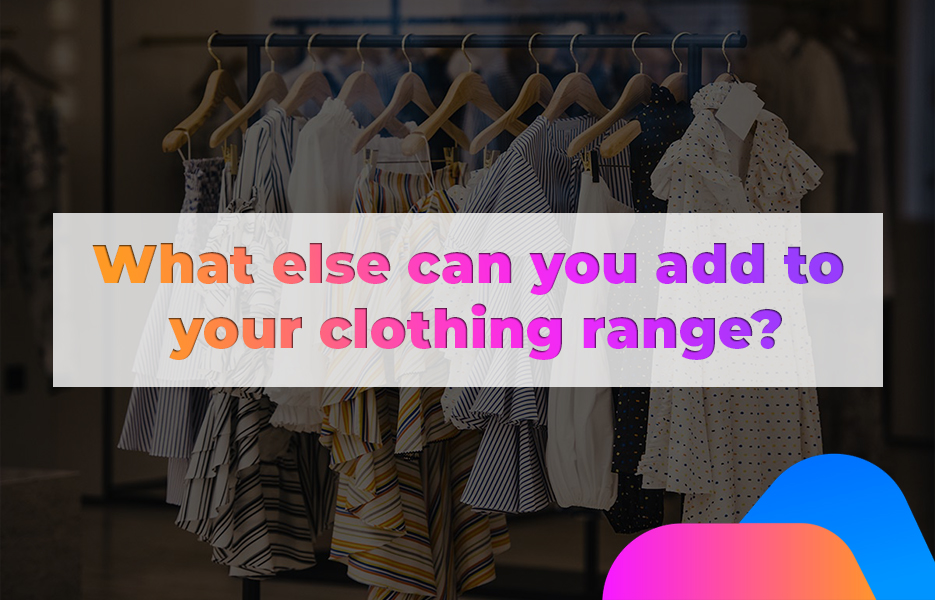
When you’re selling items of clothing, there are plenty of ways you can diversify your range and keep customers interested. Throughout the year, different accessories are in demand – and if you’re DropShipping, you won’t ever need to worry about clearing old, or out-of-season stock.
Seasonal additions
Spring and summer are traditionally wedding season in the west – so adding items such as hair accessories, shawls or pashminas and brooches or silk corsages can help your female customers to spend a little more with you. Don’t forget if you’re adding dresses or tops that require strapless bras, you can add those to your range and cross-promote them on your listings. A trend we’ve seen over recent years for heterosexual couples attending weddings is for the man to wear a tie that complements the colour of his partner’s dress, so you could consider adding silk ties in a range of colours.
Throughout the autumn and winter, items that help keep customers cosy are a great addition to your range – not just ski jackets, scarves and gloves, but also items that help with staying snug indoors – such as blankets, pyjamas, dressing gowns and slippers. You don’t have to stick with just ladieswear either – selling these items in children’s and men’s sizes mean you can help customers kit out their whole family.
Year round additions
Fashion jewellery sells well year round – you just need to alter the kind of styles you offer at different times of the year. During the lead up to holiday season, you might look for sparkly, glamorous items that will help customers complete their looks at parties. When it’s warmer, think about adding brightly coloured accessories or beachy jewellery made of shells and natural materials. Jewellery items and other accessories might not add masses of profit for you – but every little helps! When a customer is able to find everything that they need for a particular occasion from you, they’re more likely to think of you for the next occasion, and check your website before they go elsewhere.
sunglasses make a great addition to your clothing range year round – we’ve noticed a decline in availability in shops throughout the colder months, but Google Trends indicates enough interest worldwide that we think it’s worth listing at least a few styles year-round.
Hats can be an interesting way to diversify your range. Different styles are popular year round – consider adding straw trilbies, Stetsons and baseball caps to your range in the warmer months, and woollen styles like beanies or felt fedoras in the colder seasons. Similarly, you can add different items of footwear – flipflops and sandals in the summer, and boots and slippers in the winter.
Bags are always in demand. Women are looking for all kinds of styles year round, from tiny coin purses to weekend sized totes. You’ll need to consider the clothing you’re selling, and find bags that complement those items. When it comes to bags for men, you might not need to change your styles quite as often – leather wallets and satchels are much more classic – but you might add in canvas options, or sportier styles in the spring and summer. When it comes to bags for children, rucksacks and satchels are big sellers in the lead up to the start of the school year – just be sure to be clear on delivery times. Smaller purses and handbags for girls are popular year round too.
DropShipping clothing from China, or from other Asian countries isn’t without considerable challenges. But difference in sizing doesn’t need to be a major headache for you, or for your customers. With the information we’ve gathered here, in addition to your own research, you can provide the best possible experience for your customers. If you’ve decided not to work with Asian suppliers, that’s fine too – finding reliable UK and European suppliers is easier than ever with Avasam. Sign up for our free account to take a look at what our suppliers have available today.

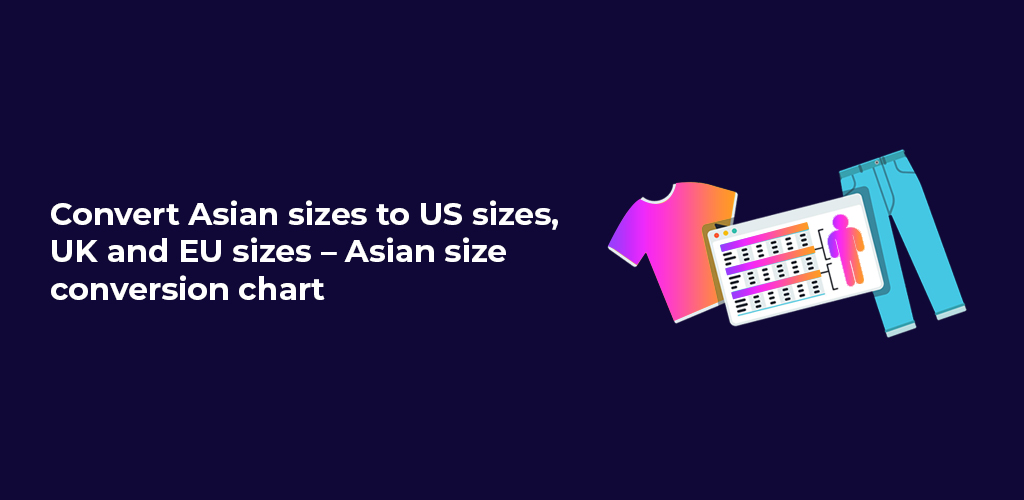


DropShip products from verified suppliers to diversify your inventory and scale your eCommerce business